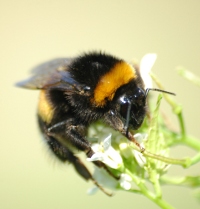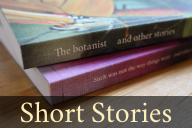How would you like to have a publication in a prestigious scientific journal at the age of 9? In a forthcoming paper in Biology letters, children from a British elementary school describe a study that they have (largely) designed and executed themselves.
 The experiment was as follows. In a training phase, bees learned that they could get a sugar-reward by flying to a small square in the center of a larger square. Sometimes the small square was blue and the surrounding square was yellow and sometimes it was the other way around. To learn this task, the bees had to use both spatial (center square vs surrounding square) and color cues (since the squares were defined by color). In the test phase, they found that the bees had successfully learned to solve this “puzzle”.
The experiment was as follows. In a training phase, bees learned that they could get a sugar-reward by flying to a small square in the center of a larger square. Sometimes the small square was blue and the surrounding square was yellow and sometimes it was the other way around. To learn this task, the bees had to use both spatial (center square vs surrounding square) and color cues (since the squares were defined by color). In the test phase, they found that the bees had successfully learned to solve this “puzzle”.
As the children say, “the experiment is important because no one in history (including adults) has done this experiment before”. Of course, the reason that the paper has attracted so much attention is because of the kids. But still, I think it is laudable that, in a comment accompanying the paper, Biology Letters focuses mostly on the scientific content and is not patronizing at all.
The paper can be downloaded for free and, unlike many scientific papers, it is quite readable, so go ahead and take a look!
Photo: Bombus Terrestris (source: Wikimedia Commons)
References
Blackawton, P. S., Airzee, S., Allen, A., Baker, S., Berrow, A., Blair, C., Churchill, M., et al. (in press). Blackawton bees. Biology Letters. doi:10.1098/rsbl.2010.1056
Maloney, L. T., & de Ibarra, N. H. (in press). Blackawton bees: commentary on Blackawton, P. S. et al. Biology Letters. doi:10.1098/rsbl.2010.1057



